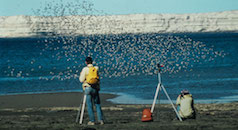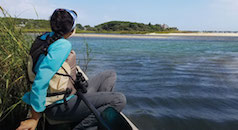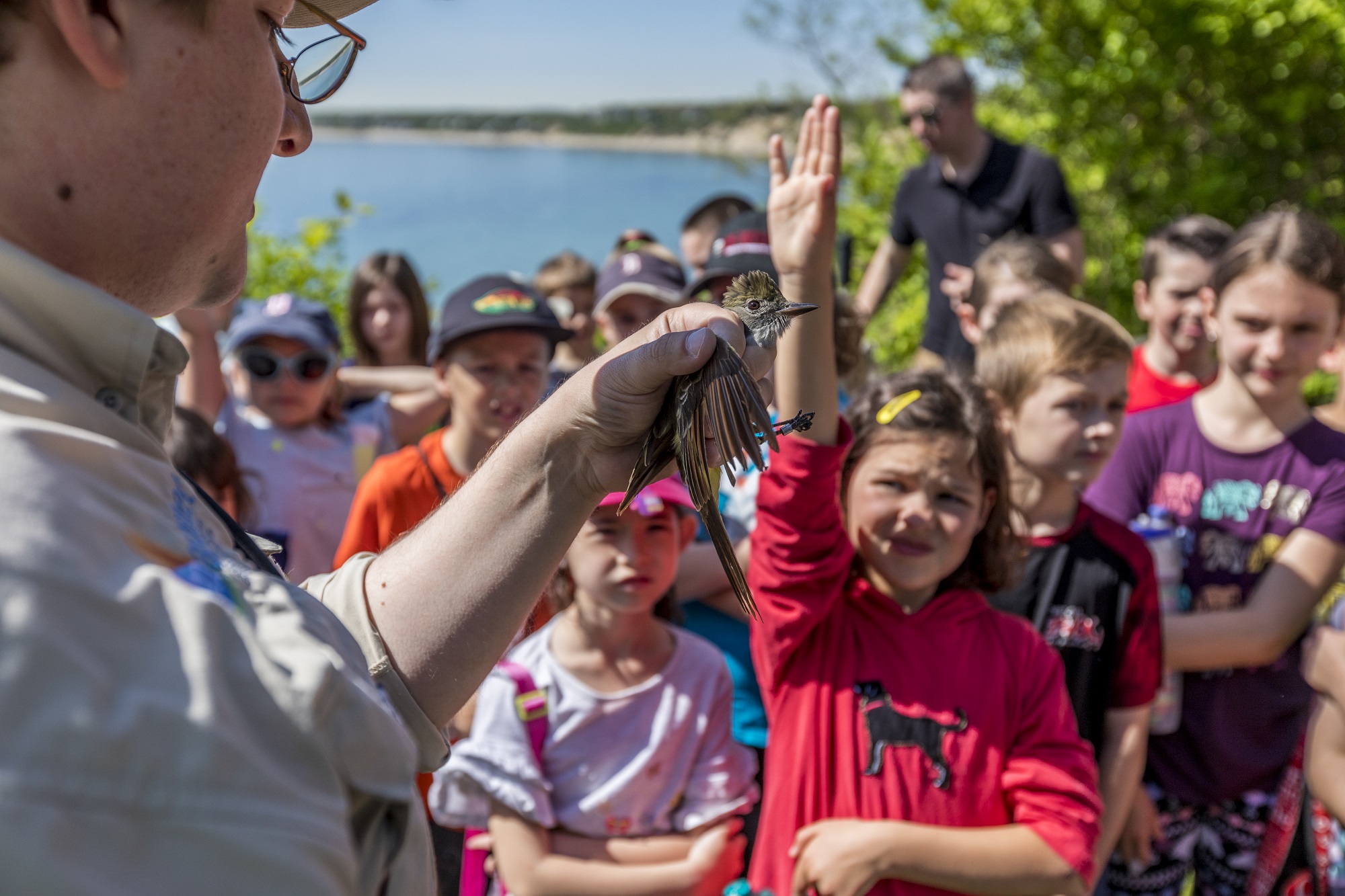Search Results

New England Lobster Fishers Sound the Alarm on Ocean Change
For Immediate Release | Contact: [email protected] | 917-287-5643 New England Lobster Fishers Sound the Alarm on Ocean Change Manomet Conservation Sciences Tap Fishers’ Insights to Uncover How Warming Waters Disrupt Marine Food Webs Plymouth, Massachusetts, October 16, 2025: Manomet Conservation Sciences plays a critical role in strengthening coastal resilience. With rapid climate change threatening coastal ecosystems, scientists are turning to local fishers for critical insights. In a September 2025 study in Fish and Fisheries, scientists conducted interviews with lobster fishers, finding that their knowledge can be invaluable in enhancing our understanding of the diverse impacts of warming waters on coastal ecosystems. "As a result of warming waters, species are moving poleward and have the ability to disrupt food webs, increasing...
The First Tracking Data for Juvenile Hudsonian Whimbrels
A new study led by Manomet scientists is shedding light on one of the most remarkable journeys in the bird world: the migration of the Hudsonian Whimbrel (Numenius phaeopus hudsonicus), hereafter referred to as Whimbrel. The paper draws on satellite transmitter data from juvenile Whimbrels tagged on Cape Cod to trace their first southbound flights. By fitting these young shorebirds with small devices that transmit their locations via satellite, researchers established migratory connections between Cape Cod and key stopover and wintering sites across the Americas. Where do these juveniles go—and why is it important to find out? The Whimbrel population along the West Atlantic Flyway has been shrinking by about 4% each year, earning it a place on the...
Manomet Announces Awardees: Small Grants for Neotropical Shorebird Conservation 2025
Manomet Conservation Sciences is proud to announce the recipients of the 2025 Small Grants for Conservation of Neotropical Shorebirds. This program was created to support early-career conservationists and researchers in Latin America and the Caribbean who are committed to advancing shorebird conservation. The Small Grants seek to generate tangible benefits for Neotropical shorebird species and populations, with special emphasis on sites within the Western Hemisphere Shorebird Reserve Network (WHSRN) and those that could qualify for this designation. The program also aims to strengthen the technical capacity of young professionals starting their careers in conservation across Latin America and the Caribbean. In this third edition, we received 56 proposals from 11 countries across Latin America and the Caribbean, a clear reflection of the...
A conservation success story: American oystercatchers, resilient shorebirds, nesting on New York beaches | Newsday
It was the tail end of the breeding season for American oystercatchers, a quirky-looking shorebird that breeds onNew York beaches from Rockaway Point to the East End. Field biologist Emilio Tobón raised his binoculars andslowly scanned the zone above the high-tide line in Breezy Point. An American Oystercatcher adult, with the orange beak, and juvenile in their nesting area at the beach in Breezy Point in Queens on Monday. Credit: Debbie Egan-Chin By Tracy Tullis [email protected] Updated July 18, 2025 9:07 am SHARE / It was the tail end of the breeding season for American oystercatchers, a quirky-looking shorebird that breeds onNew York beaches from Rockaway Point to the East End. Field biologist Emilio Tobón raised his...
‘Star’ Red Knot Reveals Species’ Pluck and Peril | Georgia DNR, Wildlife Resources Division
*H7 is a Rocky among red knots. After being fitted with a small transmitter on Little Tybee Island in spring 2024, this robin-sized sandpiper migrated more than 3,000 miles to breed in the Arctic, then launched into a 5,000-mile flight south that July, navigated through a category 1 hurricane and three South American countries where shorebirds are hunted, and returned to Little Tybee this April. When it comes to beating the odds, Balboa has nuthin’ on this knot. Yet like “Rocky,” the tale of *H7 – the bird’s identifying leg-band code – can inspire and inform. Crediting the research project that identified *H7’s migration pathways, stopover sites and the gauntlet of threats survived, DNR senior wildlife biologist Fletcher Smith said...
Shorebirds in Florida are losing habitat. Living shorelines are part of the solution | Central Florida Public Media
Shorebirds in Florida are losing habitat. Living shorelines are part of the solution American oystercatchers at-large are making gains. But in Florida, the state-threatened shorebird is struggling to hold onto habitat. Even as populations dwindle for hundreds of bird species across the United States, there are some success stories taking flight: like for the American oystercatcher, one of Florida’s most iconic — and threatened — shorebirds. Molly Duerig / Central Florida Public Media A conservation team unloads biodegradable wave breaks from a boat on May 27, 2025. The cement jute wave breaks designed for erosion protection are part of a living shoreline project in the Mosquito Lagoon. Editor’s note: Before this story was published, Shiloh Schulte, a senior shorebird scientist...
Inside the All-Out, 16-State Mission to Save the American Oystercatcher | Audubon Magazine
A massive network of conservation groups bet big on a business plan to reverse the striking shorebird’s decline—and won. With a long, powerful bill capable of slicing open shells that most other birds can’t crack, the American Oystercatcher seems well equipped to find plenty to eat in its coast-hugging habitats. In the early 2000s, though, scientists noticed oystercatchers’ namesake food source was disappearing—and the shorebirds were following suit. Oyster reefs where the birds forage were receding, while development and rising seas threatened important coastal nesting habitats. By 2008 surveys found the species’ main populations along the Atlantic and Gulf Coasts had dropped by 8 percent in five years, with only around 10,000 individuals remaining. Unless something major changed, experts feared,...
Pollinator Week
Populations Each fall, North American monarchs travel from their summer breeding grounds to overwintering locations. ⛰️🦋East of the Rocky Mountains, monarchs travel up to an astonishing 3,000 miles to central Mexico, whereas the shorter migration 🦋⛰️west of the Rockies is to the California coast. There is evidence of some interchange between the eastern and western populations, perhaps when individuals cross the Rocky Mountains, when butterflies fly from the western U.S. to the Mexican wintering sites, or when butterflies from the Mexican sites fly into the western U.S. In addition to the eastern and western populations, a small non-migratory population has long inhabited southern Florida🦋🌴. While some eastern migratory monarchs pass through Florida during their migration, the resident population receives an...
How farmers can help rescue water-loving birds | Knowable Magazine
How farmers can help rescue water-loving birds Cranes, sandpipers, ducks, geese and many other waterbirds have lost essential rest stops along their seasonal migration routes. Bird-friendly agriculture can assist in filling the gaps. By Lela Nargi 05.20.2025 James Gentz has seen birds aplenty on his East Texas rice-and-crawfish farm: snow geese and pintails, spoonbills and teal. The whooping crane couple, though, he found “magnificent.” These endangered, long-necked behemoths arrived in 2021 and set to building a nest amid his flooded fields. “I just loved to see them,” Gentz says. Food & Environment Food & Environment To help birds and insects, cultivate native gardens Not every farmer is thrilled to host birds. Some worry about the spread of avian flu, others are concerned that...
Green Crabs and their Negative Impact on Coastal Habitats | 7 News Boston
DUXBURY, MASS. (WHDH) - Skip Bennett makes a living farming clams and oysters in Duxbury Bay. “We found little windows like in July, where the oysters are growing so fast,” said Bennett, Island Creek Founder. Growing fast is key because lurking at the bottom of the bay is an army of small green crabs hunting for shellfish. European Green Crabs are considered one of the “world’s most invasive species.” “They are very destructive for being so small,” said Bennett. And these small creatures are a big problem for Bennett because they feed off of soft shell clams and oysters. “They’re like potato chips and they’re just popping those things open no problem,” said Bennett. Researchers at Manomet Conservation Sciences have...



